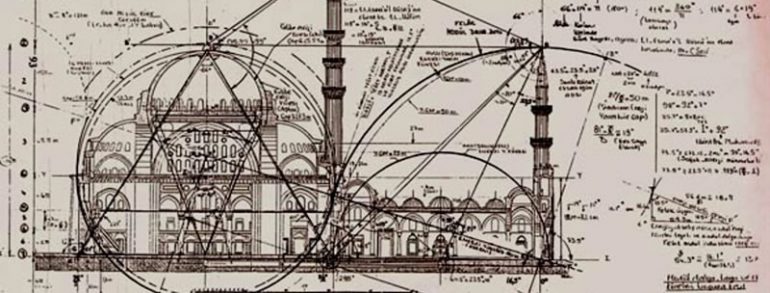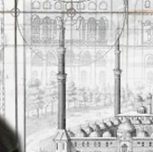(1540-1618)
Born in Albania around 1540, Sedefkâr Mehmed Agha was brought to Istanbul in 1563 for employment in the Janissaries. The talented young man had many talents and skills, including playing musical instruments and creating beautiful artisanal wordworking with inlaid mother of pearl. He started his career as a musician, and, at the same time, he improved his artistic skills in other areas. Therefore, his transition to life in Istanbul was smooth.
After working almost twenty years, he became a famous artist in this field, where he earned the title of Sedefkâr (meaning, mother-of-pearl inlay artisan). While he was creating his art pieces, he also developed his further knowledge and experience in geometry, mathematics and engineering. After Sedefkâr presented some of his handiwork, including a Koran box, to Sultan Murad III (1574-1595), he caught the Sultan’s attention and received, in return, promotions and important engineering positions in the military. This gave him the opportunity to travel in the Middle East and the Balkans.
Mehmed Agha had a chance to be a student of the legendary Sinan the Architect (1490c-1588), and gained valuable experience and referrals for work from Sinan. After his success in various projects, he was promoted to position of the chief architect in waterways in 1597 during the reign of Sultan Mehmed III (1595-1603).
When Sultan Ahmed I (1603-1617) came to power, he had an imperial mosque complex in mind to build in Istanbul. Ahmed first needed a new trustworthy architect, as he had dismissed the chief Architect Dalgıç Ahmed. In 1606, he appointed Mehmet Agha as his new chief imperial architect and Kalendar Pasha as his finance director to supervise the project; he ordered them to start the mosque project as early as possible. From land arrangement to financing, preconstruction preparations were completed by 1609, and the construction of the Blue Mosque started right afterwards.
Sedefkâr Mehmed Agha designed a pleasure pavilion in 1608 in the Topkapi Palace, now called the Privy Room of Ahmed I (Kasr-ı Ahmed), located in front of the Privy Chamber of Murat III. The walls of the pavilion are decorated in stunning green colored Iznik tiles. It is believed that the small wooden writing desks decorated with mother-of-pearl and tortoiseshell were designed by Sedefkâr Mehmet Agha. He built new waterways and fountains to bring water to the Tophane district in Istanbul in 1613 after the drought of 1611.
Early on Sedefkâr was aware of the pressure on his shoulders, as the location of the new mosque was next to the world renowned Church of Hagia Sophia. He knew that the two would be compared with each other over the following centuries. The Sultanahmet Mosque (also known as the Blue Mosque) was completed on 9 June 1617.
Sedefkâr built an imperial mosque not to compete, but so that this site would have the best examples of a church and a mosque together. He proved his talent and built one of the most well known mosques in the world. When completed, Sedefkâr Mehmed Agha proudly watched his masterpiece, but not for long, as he died the following year in 1618.
Godfrey Goodwin, (2003), “A History of Ottoman Architecture”, Thames & Hudson Ltd London, pp342-343.
Tulay Artan, (2006), “The Cambridge History of Turkey, 19 - Arts and architecture”, Cambridge University Press, pp. 408-480







